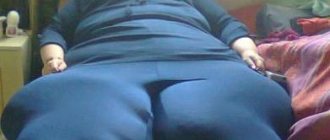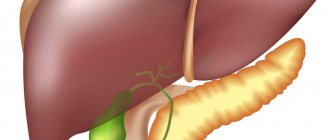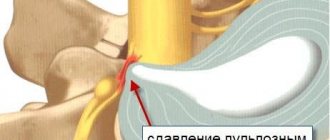Any congenital diseases must be diagnosed in childhood, and timely treatment will avoid disability and severe consequences for both the child and his family. This also applies to congenital hip dislocation. If the doctor does not determine the presence of this disease in the child, this can lead to serious walking problems. At the same time, the best period for treating this pathology is the first two to three weeks after the birth of the child; if conservative treatment has been ineffective, surgical intervention is resorted to.
Congenital hip dislocation in newborns is a condition that is accompanied by a violation of the physiological integrity of the hip joint. This condition is caused by underdevelopment (dysplasia) of one or more components of the joint.
There is another form of this disease - subluxation of the hip joint. It is characterized by incomplete separation of the articular surfaces, which occurs due to incomplete development of the components of a given joint. With timely medical care, all components of the joint are fully formed in the postnatal period and all symptoms disappear.
Author of the article / Site experts Shulepin Ivan Vladimirovich, traumatologist-orthopedist, highest qualification category
Total work experience over 25 years. In 1994 he graduated from the Moscow Institute of Medical and Social Rehabilitation, in 1997 he completed a residency in the specialty “Traumatology and Orthopedics” at the Central Research Institute of Traumatology and Orthopedics named after. N.N. Prifova.
Features of the disease
You may be interested in: Whipple's disease: causes, symptoms, diagnosis and treatment
The hip joint consists of elements such as:
- acetabulum;
- femoral head;
- femoral neck.
Congenital hip dislocation begins to develop during pregnancy. The baby’s joint develops incorrectly, and the femoral head is not fixed in the acetabulum, but is slightly displaced upward. Articular cartilage is not visible on an x-ray. Therefore, a dislocation can be diagnosed only after the birth of the child. With joint pathology, defects such as:
- the acetabulum has an even shape, but should be in the form of a cup;
- along the edge of the cavity the cartilaginous ridge is underdeveloped;
- incorrect length of joint ligaments;
- The angle of the femur is sharper.
All these disorders, in combination with weak muscle tissue, lead to congenital dislocation or subluxation of the hip in a newborn child. Pathology of the hip joint can develop only on one side or simultaneously on both.
What are the possible complications?
After birth, the processes of joint formation in the child still continue; this occurs under conditions of optimal contact between the head of the bone and the acetabulum. Dislocation does not allow the implementation of such conditions, and therefore further development of the joint is disrupted and arthrosis develops. This disease is progressive and difficult to treat conservatively if it is caused by a congenital dislocation, so over time the mobility of the joint is significantly reduced until contracture - complete immobilization.
Main classification
Congenital hip dislocation (ICD-10 code - Q65) refers to congenital pathologies that develop in the prenatal period. There are several different types of such violations, in particular, such as:
- slight subluxation of the joint;
- primary or residual subluxation of the femoral head;
- anterior, lateral, high bone displacement.
In addition, doctors distinguish between several degrees of severity of the disease, namely:
- dysplasia;
- preluxation;
- subluxation;
- dislocation.
The ICD code for congenital hip dislocation or dysplasia is Q65.8. This is the initial stage of the disorder. In this case, the surfaces remain almost unchanged, however, there are certain anatomical prerequisites for the subsequent development of dislocation. Pre-luxation is characterized by the fact that the normal fit between the joints is maintained. However, the joint capsule is tense, there is displacement and excessive mobility of the femoral head.
Channel PROGRAMMER'S DIARY
The life of a programmer and interesting reviews of everything. Subscribe so you don't miss new videos.
With subluxation, the fit of the surfaces of the joint elements is disrupted, the ligament is strongly stretched, and the head of the femur is slightly displaced. Congenital dislocation of the hip (ICD-10 code - Q65) is characterized by the fact that there is a complete discrepancy between the head of the femur and the glenoid cavity.
You may be interested in: “Valsartan”: analogues, instructions for use
To identify such changes, it is imperative to undergo a complete diagnosis to determine the presence of pathology and subsequent treatment.
Causes of hip dislocation in newborns
Congenital dislocation of the hip joint is the most complex and dangerous type of dysplasia - a disease that results in absolute separation of the articular surfaces, separation of the femoral head and glenoid cavity, delay in the process of ossification of the joint elements, etc. Reasons that potentially influence the possibility of developing congenital pathology can be:
- Genetic predisposition;
- The mother's first birth (this may be due to the elasticity of the uterine muscles);
- Incorrect position of the newborn in the womb or during childbirth;
- Mother's illnesses during pregnancy;
- External factors (ecological conditions of the mother’s permanent location).
Causes
The causes of congenital hip dislocation in children have not yet been fully established. According to doctors, such a violation can be provoked by a number of external and internal factors, in particular, such as:
- severe toxicosis during pregnancy;
- breech presentation of the child;
- fetal developmental delay;
- the fruit is too large;
- previous infections during pregnancy;
- poor environmental factors;
- gynecological diseases;
- bad habits;
- premature birth;
- birth injuries;
- hereditary factor.
Congenital dislocation of the hips without appropriate treatment provokes the development of coxarthrosis. Such a change is accompanied by constant pain, reduces joint mobility and, as a result, leads to disability.
What it is
To understand the essence, you need to delve a little deeper into the anatomy of the hip joint. To begin with, it is worth noting that this movable joint is formed using the femoral head and acetabulum. The latter is similar in shape to a bowl. A cartilaginous rim is located across the entire area of the dent, which is necessary for stabilizing functions. For example, keep the femoral head inside and limit damaging movements.
From the inside, the cavity is filled with fatty tissue, and the head is covered with cartilage tissue. A ligament extends from it, which is attached to the acetabular socket, thereby ensuring fixation of the head. From above, the joint is further strengthened by muscles and capsule. According to the anatomical structure, the femoral head is located inside the acetabulum and is held there during any movement of the lower extremities (running, walking, gymnastic exercises).
Congenital hip dislocation occurs when the described structures have defects. The main one is that the head is not fixed in the cavity, resulting in injury. Choosing the most common anatomical problems, you can focus on the following:
- The shape and size of the acetabular socket is irregular, it becomes flat and cannot function normally.
- Disturbance in the development of the cartilaginous ridge.
- Congenital weakness of the mobile joint, its abnormal length.
Main symptoms
The symptoms of congenital hip dislocation are quite specific, and if these signs are present, you can suspect this pathology in your child. In a baby under one year old and at an older age, the signs manifest themselves completely differently due to the maturation, development of the child, as well as the worsening of the pathology. Congenital hip dislocation in newborns manifests itself in the form of symptoms such as:
- the presence of a characteristic click when bending the legs at the knees when spreading the hips;
- asymmetry of the gluteal-femoral folds;
- unimpeded movement of the femoral head;
- shortening of the affected limb;
- limitation of abduction of one leg or both when bending;
- turning the foot outward;
- displacement of the femoral head.
Congenital dislocation of the hips in children older than 12 months can be expressed in the form of such signs as:
- the child begins to walk very late;
- there is lameness on the affected leg;
- curvature of the spine in the lower back;
- the child tries to lean towards the healthy limb;
- the head of the femur cannot be palpated.
If all these signs are present, you need to undergo a comprehensive diagnosis to prescribe subsequent treatment.
Possible complications
When performing closed reductions, necrosis of the cartilaginous structures of the joint, compression of the sprained ligament of the femoral head, damage to bone structures, and fractures may occur.
Operations threaten the occurrence of long-term pain; if the integrity of the bone is damaged, osteomyelitis, a fracture of the socket or neck of the femur may appear. Postoperative wounds may fester. Such operations threaten significant blood loss, since the main arteries are localized nearby.
Carrying out diagnostics
Diagnosis of congenital hip dislocation is based on an examination by an orthopedist, as well as instrumental examination. To confirm the presence of the disease, a consultation with a pediatric orthopedist is required. The doctor may additionally prescribe an ultrasound of the joints, and x-rays are also required.
You will be interested in: Gel "Allomedin": indications for use, instructions, composition, analogues, reviews
The last diagnostic method is used only from 3 months. If until this moment the baby does not ossify the main areas, then the x-ray may show a false result.
The examination is carried out in a calm environment, 30 minutes after feeding. For a successful examination, maximum muscle relaxation is necessary. Ultrasound diagnostics is used at the age of 1-2 months. In this case, the location of the femur is assessed.
During the examination, the child is placed on his side, with his legs slightly bent at the hip joints. Based on the results of the study, the nature of the pathological changes can be determined.
In particularly difficult cases, computed tomography is used, which allows one to assess the condition of the cartilage tissue and detect changes in the joint capsule. Magnetic resonance imaging involves layer-by-layer scanning, which allows you to very clearly visualize cartilage structures and assess the nature of their changes.
Congenital dislocation of the hip joint can be eliminated
If a newborn is diagnosed with a dislocated hip joint, this indicates that other elements of the joint are not sufficiently developed.
Read also: Dislocation of the knee joint
There are three forms of such a dislocation; they can transform into one another:
Congenital dislocation is characterized by the fact that the relationship between the head and the socket in the hip joint is disturbed. Most often, unilateral dislocation occurs, and in girls it occurs almost 5 times more often than in boys.
Carrying out treatment
Treatment of congenital hip dislocation should begin immediately after diagnosis. Therapy is carried out using conservative and surgical methods. If the disease was not detected in early childhood, then later it only gets worse, and various complications develop that require urgent surgical intervention.
Congenital hip dislocation (ICD-10 - Q65) is a complex pathology, therefore, the most favorable period for treatment with conservative methods is considered to be the age of a child up to 3 months. However, it is worth noting that even at an older age, such methods can give quite good results.
For congenital dislocation of the hip, conservative treatment is performed in several ways or a combination of them. Mandatory procedures include therapeutic massage. It helps strengthen muscles and stabilize damaged joints.
Fixing the leg with plaster or orthopedic structures helps to fix the legs in an abducted position until the cartilage tissue on the acetabulum fully grows and the joint is stabilized. They are used for a long time. This design can only be installed and adjusted by a doctor.
To treat congenital hip dislocation in children, physiotherapeutic procedures are used, in particular, such as:
- applications with ozokerite;
- electrophoresis;
- Ural Federal District.
Physiotherapeutic techniques are used for complex treatment. If the therapy is not effective within 1-5 years, closed reduction of dislocations may be prescribed. After the procedure, a special plaster construction is applied for up to 6 months. In this case, the child’s legs are secured in an extended position. After removal of the structure, a rehabilitation course is required.
Surgery for congenital hip dislocation is prescribed in cases where conservative methods have not brought a positive result. Surgery is performed at the age of 2-3 years. The method of performing the operation is selected by the doctor, taking into account the anatomical features of the joint.
Treatment
The disease can be cured in two ways, both surgically and conservatively. If the diagnosis was made on time, then it can be treated conservatively, namely, an individual version of the splint should be selected. The splint helps the knee to be in a constant flexed or extended state at the hip and knee joint.
The most suitable age for such manipulations is the first 2 weeks after the birth of the child.
For this reason, such procedures must be done very carefully so as not to cause additional injury to the newborn baby. However, this method can also be used for a child older than this age, but the treatment process will take longer, and most often causes great psychological trauma to the child.
And, unfortunately, if the diagnosis was made at the wrong time, then surgical intervention is required. Surgical treatment can be divided into groups:
- surgery in the pelvic region;
- open hip reduction;
- surgery of the proximal hip bone;
- palliative surgery.
Thus, if you suspect that your baby has hip dysplasia, try not to delay the timely identification (by a specialist) and treatment of the disease.
Conservative treatment
Congenital hip dislocation in newborns should be treated immediately after an accurate diagnosis has been made. For infants up to 3 months of age, doctors recommend using the wide swaddling method as therapy. The child's legs should be spread apart. To securely secure the hips with a swaddle, you need to fold the swaddle in 4 layers so that it can hold the baby's hips in the correct position.
The baby must have complete freedom of movement, otherwise he will begin to act up, thereby expressing his dissatisfaction. Very tight swaddling provokes poor circulation. For conservative treatment to be successful, certain rules must be followed, namely:
- the baby's feet should be outside the mattress;
- starting from 6 months, you need to teach your child to sit with his legs apart;
- you need to hold it correctly in your arms so that the child’s legs cover the adult’s torso.
To eliminate congenital dislocation, various orthopedic devices are used. For infants and children up to 3 months, Pavlik stirrups are used. They consist of 2 ankle braces connected by straps.
To treat a child older than 3 months, doctors prescribe Vilensky splints. A child at the age of 6 months is put on a Volkov splint for correction. Such an orthopedic device consists of 2 plastic plates. They are attached to the hips with a cord.
Massage is an integral part of conservative therapy, but it should only be performed by a qualified specialist. The duration of treatment is generally 2 months, subject to daily procedures. Physical therapy is also required. The procedures must be repeated every day 3-4 times.
Diagnostics
It is enough to suspect a congenital dislocation of the left or right hip in order to begin the necessary measures. It needs to be diagnosed comprehensively. To begin with, the orthopedist conducts a visual examination, during which you can notice the baby’s discrepancy with the norms. X-rays and ultrasound examinations provide a comprehensive picture of the situation. Based on these studies, the doctor can make an accurate diagnosis and prescribe a course of therapy.
It is worth noting that according to the rules, radiography is performed on children from the age of three months. This can be explained by the fact that the ossification of some parts of the pelvis must be completed, otherwise the picture will turn out to be uninformative. If it is necessary to determine pathology in children under three months, ultrasound is actively used. The advantages of this method are safety for the baby’s health and information content. An ultrasound can be done many times without harming the baby, plus, this study identifies this problem with high accuracy.
Surgical intervention
If conservative methods do not bring the required result, the doctor may prescribe surgery. Surgical methods that are used to treat congenital dislocations are divided into 3 groups, namely:
- radical;
- corrective;
- palliative.
Radical methods include all methods of open elimination of congenital dislocation. Corrective operations mean that during surgical intervention, deviations from the norm are eliminated and the limb is lengthened. They are carried out separately or in combination with radical ones.
Palliative operations involve the use of special structures. They can be combined with other therapy methods. The surgical method is selected separately for each child, depending on the anatomical features.
You may be interested in: Bifidumbacterin: analogues, instructions for use, reviews
It is worth noting that complications may arise. These include the process of suppuration in the area of sutures. The infection can affect nearby tissues. During the operation, the baby loses a lot of blood, and his body may react poorly to the administration of anesthesia.
Some children begin to develop osteomyelitis over time, and this can also lead to pneumonia or purulent otitis media.
Surgical treatment
Surgery is necessary only in very severe or advanced cases. It is prescribed only after certain examinations are performed to determine the degree of dislocation and anatomical changes. The age of the patient is also taken into account.
The most successful operations were when Lorentz canopies were created, or Shants osteotomies.
Reference: such operations were most often performed for the older category of the population, while for the younger generation, ordinary straightening of the node after completion of the Shants osteotomy was sufficient.
Complications after surgery
Experts distinguish two types of postoperative complications:
- Local;
- General.
The first includes the accumulation of pus in wounds, osteomyelitis. Common complications include shock, pneumonia and purulent otitis. A serious complication is bone mutilation, which results in a fracture.
See also: symptoms of a sprained ankle.
Rehabilitation
The rehabilitation process is very important. Therapeutic gymnastics is used not only to normalize and restore motor skills. It allows you to return the correct shape of the affected joint. With the help of special exercises, muscles are strengthened and the abnormal position of joints is corrected.
The baby should be placed on his back, and then the straightened legs should be moved to the sides. You need to make these 5-6 movements. Pull the baby's leg towards you slightly, holding his shoulders. Circular movements of the legs will help strengthen the muscles of the newborn. While performing gymnastics, the child should lie on his back. One by one, you need to bend the child’s legs, trying to ensure that the knees touch the body.
Causes
The basis for the development of dislocation is a violation of the intrauterine development of the hip joint. In this case, all its structures are affected: bones, cartilage, capsule, ligaments, tendons and muscles. Even the nerve and vascular plexuses surrounding the joint are affected. Such congenital disorders are largely due to the influence of various unfavorable factors on a woman’s body during pregnancy:
- Vitamin deficiency.
- Infectious diseases.
- Taking medications.
- Harmful working conditions.
Of particular danger are those that act during critical periods when the child’s musculoskeletal system is developing - in the first trimester. In addition, a hereditary connection has been established between congenital dislocations in children and joint anomalies in parents.
The causes of congenital dislocation lie in unfavorable factors affecting the intrauterine development of the skeletal system, sometimes against the background of a hereditary predisposition.
Possible complications and prognosis
If congenital dislocation is not treated in a timely manner, you may encounter quite unpleasant consequences. They can manifest themselves in childhood and adulthood. Children with this disorder begin to walk much later.
Unilateral hip dislocation often manifests as lameness in the affected limb. Since there is a constant tilt of the body on only one side, the child develops scoliosis. This is a rather serious disease, which is characterized by curvature of the spine.
As a result of the pathology, thinning and deformation of the joint is observed due to constant friction. People over 25 years of age may develop coxarthrosis. Due to malnutrition of bone tissue with prolonged pressure on the joint, dystrophic changes occur in the area of the head of the femur.
If a dislocation is not treated in a timely manner, it gradually leads to deformation of bone tissue and subsequent displacement of the position of the femoral head. Such consequences can only be treated surgically. During the operation, the surgeon replaces the head of the joint with a special metal prosthesis.
If it was possible to carry out complex treatment and eliminate the pathology in childhood, then the prognosis for full recovery is often favorable. However, many people live with a similar problem and do not even suspect that they have problems with their health. The disease very often occurs latently and does not manifest itself even with significant physical exertion.
Associated symptoms and necessary diagnostics
A child with this disease may not show any signs of it. In this case, an experienced doctor, conducting a full examination and examination of the child’s condition, should detect or suspect the presence of dysplasia. But the mother should also be attentive to her child, and should contact a pediatrician or pediatric orthopedist if the following manifestations occur:
- shortening of one and lower limbs - in the first stages of the postpartum period this manifestation may not be noticed, with subsequent growth and the emergence of motor activity, shortening of the limb is observed on the affected side;
- the appearance of an additional fold in the thigh or buttock area;
- asymmetrical location of the buttock folds - for this you need to lay the child on his stomach, and you need to make sure that the child does not bend and is motionless for a certain time, otherwise this may lead to false suspicions;
- drooping of one of the buttocks - can be detected by lifting the child in your arms so that the lower limbs hang down, and viewed from the back;
- when the child’s legs are abducted, their asymmetry is observed - one leg may lag behind the other in motor volumes;
- when abducted, the child’s knees may touch the table (this requires little effort) - in this case, pathological mobility is observed on the side of the affected limb;
- a click or clatter during movements in the knee and hip joints - appears when the lower extremities are abducted, in this case the head pops out of the articular socket, and the child’s legs are brought together, a click appears when the femoral head falls back into the socket.
If you do not consult a doctor in time, this condition can lead to gait disturbance, which manifests itself in a significant limp on the affected side. With bilateral subluxation of the hip joint in newborns, the gait subsequently becomes “duck-like.” In both cases, such changes lead to disruption of the physiological state of the pelvic bones and spine, which manifests itself in impaired functioning of the pelvic organs, back pain, and the appearance of deformation.
When examined by a doctor, he must determine (if there is a disease) or refute the above signs. If congenital dislocation of the hip joint occurs in a newborn, and its signs are determined, then the child is prescribed additional research methods that allow a more accurate assessment of the condition. In this case, carry out:
- Ultrasound - this research method is best performed as a screening; it is absolutely harmless to the child.
- CT scan or x-ray of a joint allows you to visualize and evaluate the structure of bone formations, their condition and location. It is performed less frequently due to the presence of radiation.
- MRI - this study will help visualize and assess the condition of the hip joint and surrounding tissues. This research method is more effective than ultrasound, and is built on the principle of capturing magnetic waves from various tissues of the body.
Carrying out preventive measures
Prevention of congenital hip dislocation is carried out in several stages. Prenatal and birth prevention involves compliance by the expectant mother with the following rules:
- timely examinations by a gynecologist, as well as compliance with absolutely all his instructions;
- abstinence from smoking and drinking alcohol;
- maintaining a healthy lifestyle;
- proper nutrition;
- timely consultation with a doctor in the presence of edema or high blood pressure;
- correct behavior during childbirth.
During pregnancy, it is imperative to undergo ultrasound diagnostics in order to promptly determine the development of pathologies. It is also required to comply with certain rules regarding the child. It is necessary to exclude swaddling him with straight legs, as this can lead to problems, because this position of the child is unnatural. A massage is required, which includes exercises to spread the baby’s legs.
Starting from the age of two months, it is recommended to carry the child in special devices with legs apart. If there is a genetic predisposition, an ultrasound scan and observation by an orthopedic surgeon are required. Only strict compliance with all rules and requirements will prevent the development of the disease and problems in the future.
Congenital dislocation of the hip (ICD-10 - Q65) is considered a very complex disorder of the normal development of the hip joint, which must be treated immediately after identifying the problem in order to prevent the development of complications.
Source
Hip reduction
The decision on such a mini-operation is made by the attending physician. It can only be carried out in cases where there are no anatomical abnormalities in the structure of the hip joint. Reduction of a dislocation occurs only with high-quality anesthesia. The best option would be anesthesia. As for local anesthesia, it is practically not used due to the low level of effectiveness.
There are two main methods for hip reduction:
- Dzhanelidze's method. The patient should be placed on his stomach, face down, so that the leg hangs down. One doctor needs to press on the sacrum, thereby pressing the pelvis. Another doctor should bend the leg at the knee joint at an angle of ninety degrees and press on the popliteal fossa. This is not done abruptly, but smoothly, gradually increasing strength. When the charter is in place, you will hear a characteristic sound.
- Kocher-Kefer method. Here the patient must be placed on his back. One of the doctors should fix the pelvis in a position in which the ilia are pressed. Another needs to bend the leg at the hip and knee movable joints at a right angle and stretch vertically upward. This method is ideal for reducing anterosuperior oblique dislocation.
Rehabilitation of congenital hip dislocation goes well if the joint is corrected in a timely manner. This process is not complicated, but you should not try to perform this action yourself. There are qualified doctors who will straighten the mobile joint in a timely manner, which will significantly reduce recovery time.
Exercises and massage
It is worth pointing out that gymnastics and other procedures are quite effective means, but only a pediatrician can prescribe them. Careless or too rough manipulations will most likely only worsen the situation.
The massage therapist must pay maximum attention to the lower back and buttocks. Treatment of the hip joints is no less important. If parents plan to carry out the manipulations themselves, they will have to familiarize themselves with the techniques used by professionals. To do this, simply attend several sessions as prescribed by your pediatrician.
A series of passive exercises during which the mother manipulates his body with her own hands is completely safe for a newborn. The main thing here is to act effortlessly, carefully and slowly.
This video shows gymnastics for children with dislocations:









